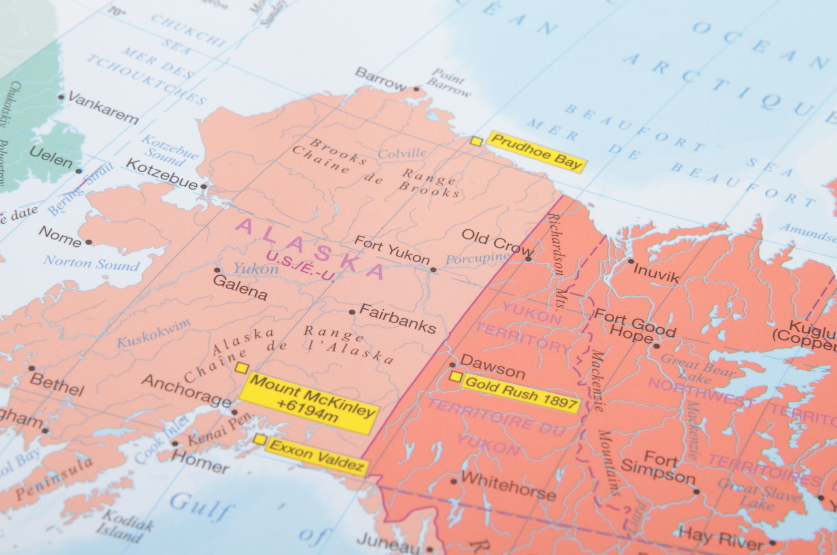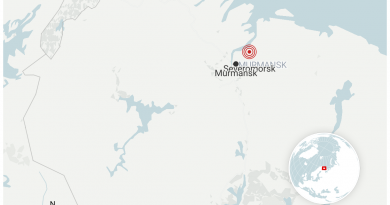Alaska pipeline proposal raises eyebrows

Alaska is considering a dramatically different approach in its effort to build a natural gas pipeline.
After more than two years of working with the big three North Slope oil companies, state officials are proposing Alaska take a larger stake — or take complete control of the project.
And that plan is raising some eyebrows.
The Alaska LNG project, as currently planned, is massive. People working on it call it a “gigaproject” — a giant gas treatment plant on the North Slope, an 800-mile pipeline down to Cook Inlet, and then a huge liquefaction facility in Nikiski — all to fulfill the decades-long dream of tapping the state’s gas reserves and shipping it to market.
Estimates have pegged the cost at $45 to $65 billion dollars.
Under the current plan, the state would split that cost with its three partners: ExxonMobil, BP and ConocoPhillips.
Payment questions
So the question becomes: if the state takes full ownership, who would pay?
Keith Meyer is the new president of the state-owned Alaska Gasline Development Corp. He said, not Alaska.
“Just because state owns more doesn’t mean it has to invest more,” Meyer said.
The idea is to bring in outside investors to finance the project — anyone from customers in Asia to large pension funds.
“It is an infrastructure project,” Meyer said. “If we do this correctly, and put some good contracts in place, this will be very attractive to infrastructure funds and investors.”
Changing LNG market
Meyer said the new approach was prompted by discussions with the state’s partners this winter, when the three companies indicated that with low oil prices cutting into their cash flow, they might not be ready to move ahead next year as planned.
Asked Meyer if any company wanted to pull out entirely, Meyer said, “Pull out, I would say no. Change the pace of investment, yes…But everybody, without exception, wants this project to happen.”
But the administration sees any delay as potentially fatal.
Right now, the LNG — or liquefied natural gas — market is over-saturated, with prices a fraction of what they were a few years ago. Many analysts predict that oversupply will subside by the early 2020s.
When it does, Meyer said, the state needs to be ready, or competing projects will fill the void.
“We need, as a state and as a project, we need to hit that window,” he said. “We need to be in service in that window.”
Some not convinced
But the idea has its skeptics.
“A lot of people get hurt jumping through windows that aren’t open,” said Larry Persily, an oil and gas advisor to the Kenai Peninsula Borough and longtime observer of the state’s pipeline efforts.
Persily said there is some consensus there will be more demand for LNG early next decade. But it’s impossible to say exactly when — and for the state to focus on that window may not make sense.
And, Persily said, while many LNG projects do bring in outside financing, the sheer size of Alaska’s project makes that approach daunting.
“If you’re looking at $30-, $40-, $50 billion of investment to go out and raise in the market for an LNG project,” he said. “That would be the largest LNG project financing ever put together in the world.”
Administration hasn’t shared details with lawmakers
Is the state capable of marshaling that kind of effort? That’s the question raised by Anchorage Republican Cathy Giessel, who chairs the Senate Resources Committee.
“The most obvious and first concern is how do we afford it?” Giessel said in a phone interview Wednesday. “The secondary concern is, who has the expertise to step into a greater role?”
Giessel said she doesn’t believe that either the Alaska Gasline Development Corporation, or its citizen board, have the experience to oversee a project like this.
And she says she doubts the Senate would support the plan, from what she knows of it so far. That’s not much — Giessel said the administration hasn’t shared any details with lawmakers.
As for companies, ExxonMobil, BP and ConocoPhillips all replied to questions with brief emailed statements. Exxon and BP wouldn’t discuss their negotiations with the state.
But ConocoPhillips confirmed the administration has floated the idea of a state-owned pipeline.
“We can confirm that the State has proposed a state-controlled project and conversations to better understand the proposal have begun,” spokesperson Natalie Lowman wrote in an email. “Regarding our perspective on these conversations, right now we are evaluating all options.”
Related stories from around the North:
Canada: Energy challenges in Canada’s North, Eye on the Arctic
China: Chinese mega-deals in Yamal LNG, The Independent Barents Observer
Norway: OMV finds more oil in Barents Sea, The Independent Barents Observer
Russia: Big interest in new Arctic LNG: Novatek, The Independent Barents Observer
Sweden: Sweden to have 100 percent renewable energy by 2040, Radio Sweden
United States: Alaska considers major changes to LNG project, Alaska Public Radio Network



